"Why Is My Room So Cold?"
Oct. 4, 2016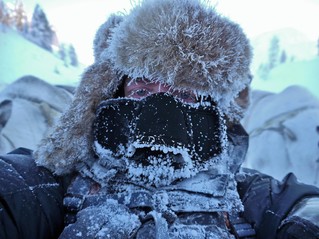
Firstly, let's talk about your heat source. Most houses in Canada will have a furnace as the main source of heat in their home - and most of those furnaces will be fueled by natural gas. How do they work? Without getting technical, basically the thermostat located in a central area of the home (hopefully not exposed to direct sunlight, direct heat from a fireplace, or located near an exterior entrance) senses when the temperature in that area of the house drops below a set point. When it does, it sends a signal to the furnace to turn on the burner and start heating up the heat exchanger inside. Once the furnace temperature reaches a certain point, a large fan inside the furnace blows the house air over the heat exchanger and out through the top of the furnace into the supply ducts, delivering warm air to the rooms of the house through heating vents ("registers").
The force of the furnace fan creates a negative air pressure in the house that draws air in through the return ducts and back to the furnace to be heated again - all we're trying to do is circulate the house air through the furnace. Once the thermostat senses that the temperature has risen to the desired level, it shuts down the burner. This is the conventional sequence - mid/high efficiency furnaces may operate differently, but maintain the same general idea.
If you have persistently cold areas in your house - here are the top reasons why:
Missing Insulation: If insulation is missing or inadequate inside an exterior wall, a ceiling common with the attic space or a floor common with a cold garage or crawlspace, the ambient air in the room can be at a normal temperature, but you might still feel cold. The reason for this is radiant heat loss. If a surface like a wall is substantially colder than the rest of the environment, it will absorb heat from the warm objects in the room, including you. This is because heat always travels from areas of high energy (hot surfaces) to areas of low energy (cold surfaces).
Thermal image of missing insulation:
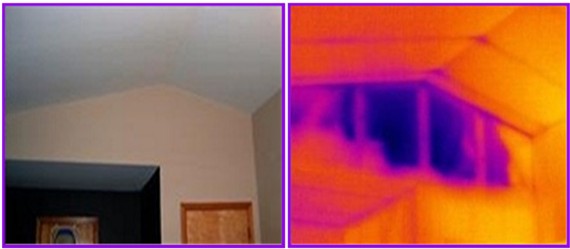
Wrong Register/Vent Locations: The locations of heating registers and return vents play a huge role in how effectively your house will be heated. Heating supply registers need to be near the exterior walls in front of all doors and windows. Return vents need to be near the interior walls – often these will be one or two large vents in a central area of the house, rather than many small vents opposite the heating registers. Common issues we find include 1) return vents being located too close to heat registers, in which case the heat will immediately be drawn into the return duct rather than into the living space, and 2) heat registers being located too far from exterior doors and windows. This is common when homeowners finish their basement ceiling with suspended tile and simply aren’t aware of the importance of where the vents and registers are placed. The closer to exterior windows and doors, the better. In winter, you could say cold air is trying to force its way into the house through windows and doors – the heat registers act like a wall protecting the interior from cold intrusion, so if they are placed in the middle of the room, they will not be very effective.
A room may also be uncomfortable if the heating registers are located on the ceiling (which is normal building practice for basements), because heat rises and it is difficult for the heated air to reach floor level due to its buoyancy. Space heaters are usually required in these situations.
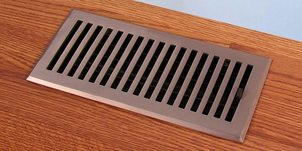
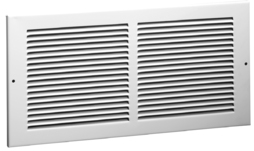
Obstructed Air Circulation: Remember, our goal is to circulate the house air through the furnace to heat the living space. If a room is cold, check if something is covering up the heating register underneath the window. If the register is clear, check if the door of the cold room is tight against the floor when it is shut. If it is, the room will act like a balloon and will not circulate any of its air through to the furnace as long as the door is closed. A simple fix is to trim an inch or so off of the bottom of the door to allow for air circulation.
Cold Ducts: If any heating ducts run through a cold area (like an unheated crawlspace), they have to be insulated properly. If the ducts are cold, the warm air will give up its heat to the metal duct walls rather than the living space. Rooms that are built as part of a jet-out or directly above an unheated garage or crawlspace can have very cold ducts in winter if exceptional attention was not paid to insulating the floor.
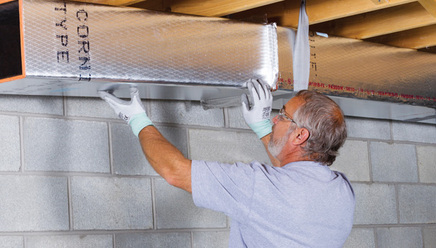
Written by:
DONOVAN ILLIG
Home Inspector & Residential Environmentalist
Premium Home Inspections Ltd.
250-617-3378 | donovan@premiumhi.net
CPBC License #71217



